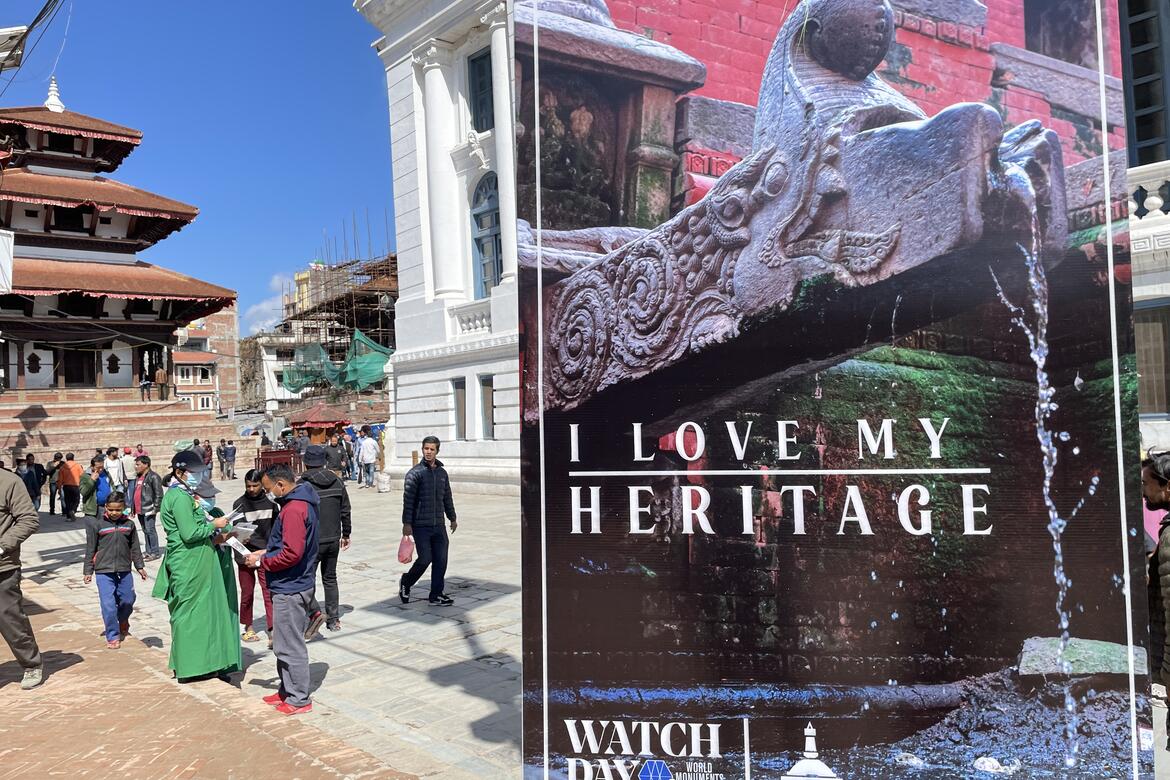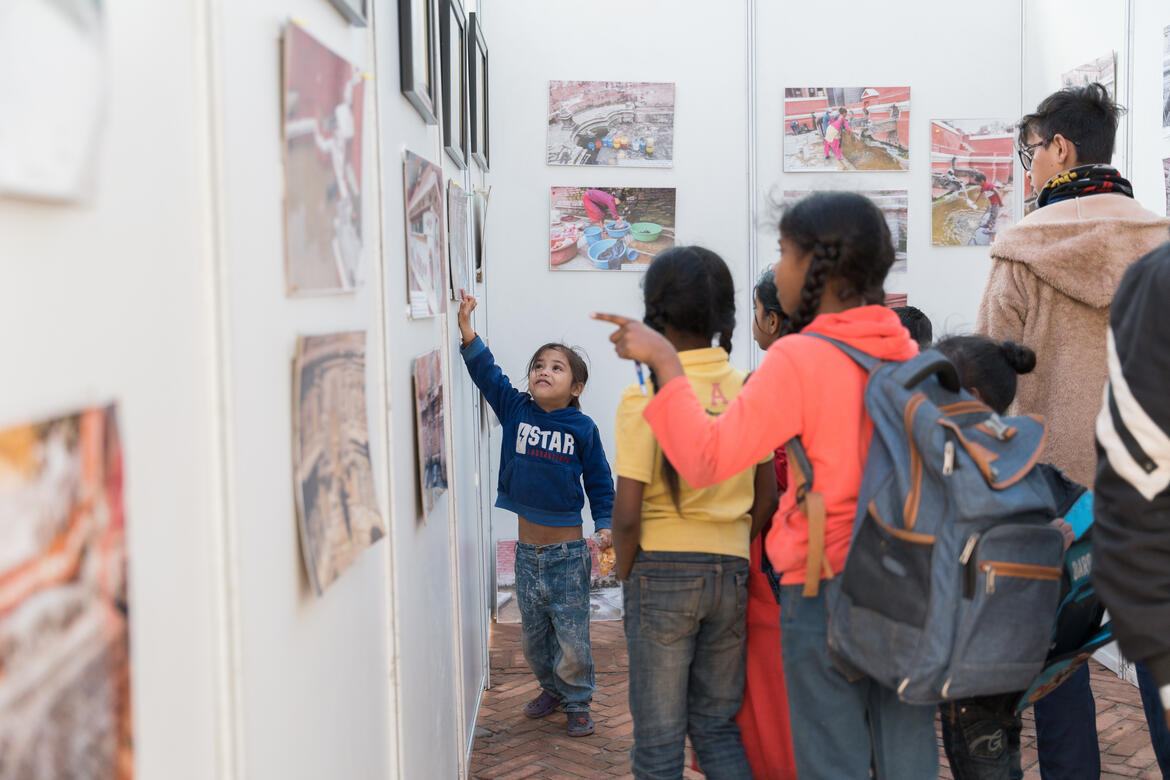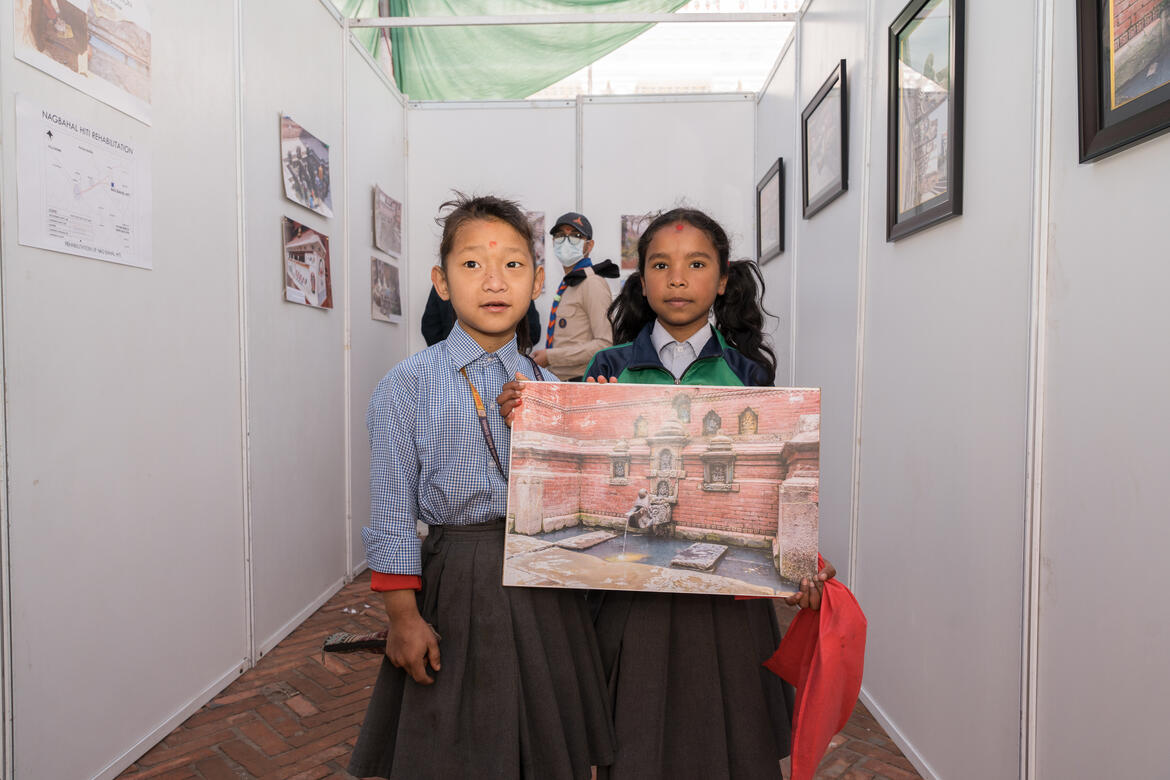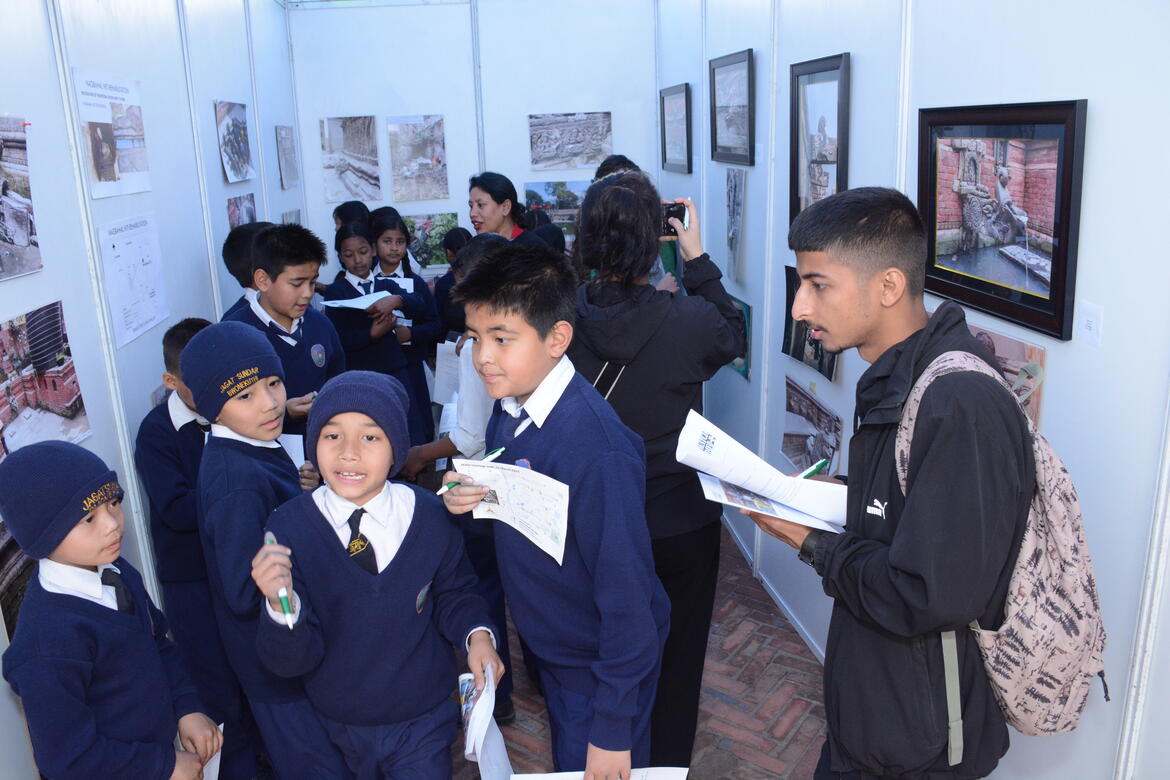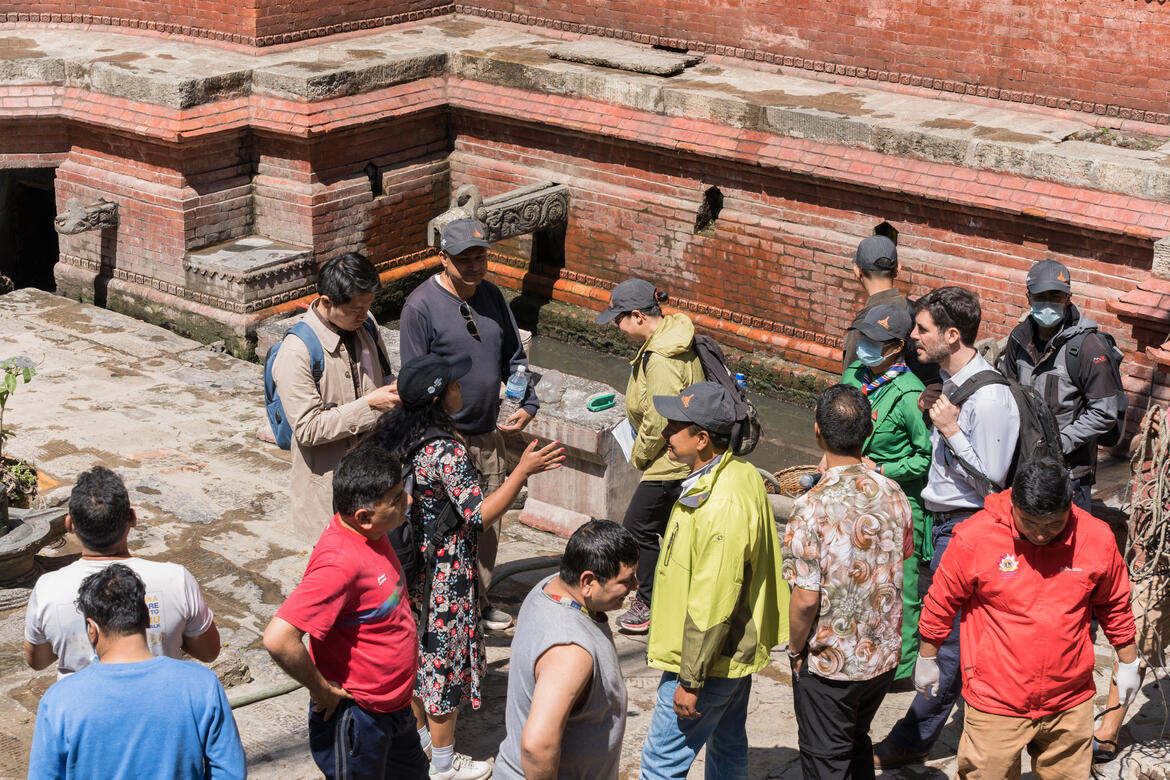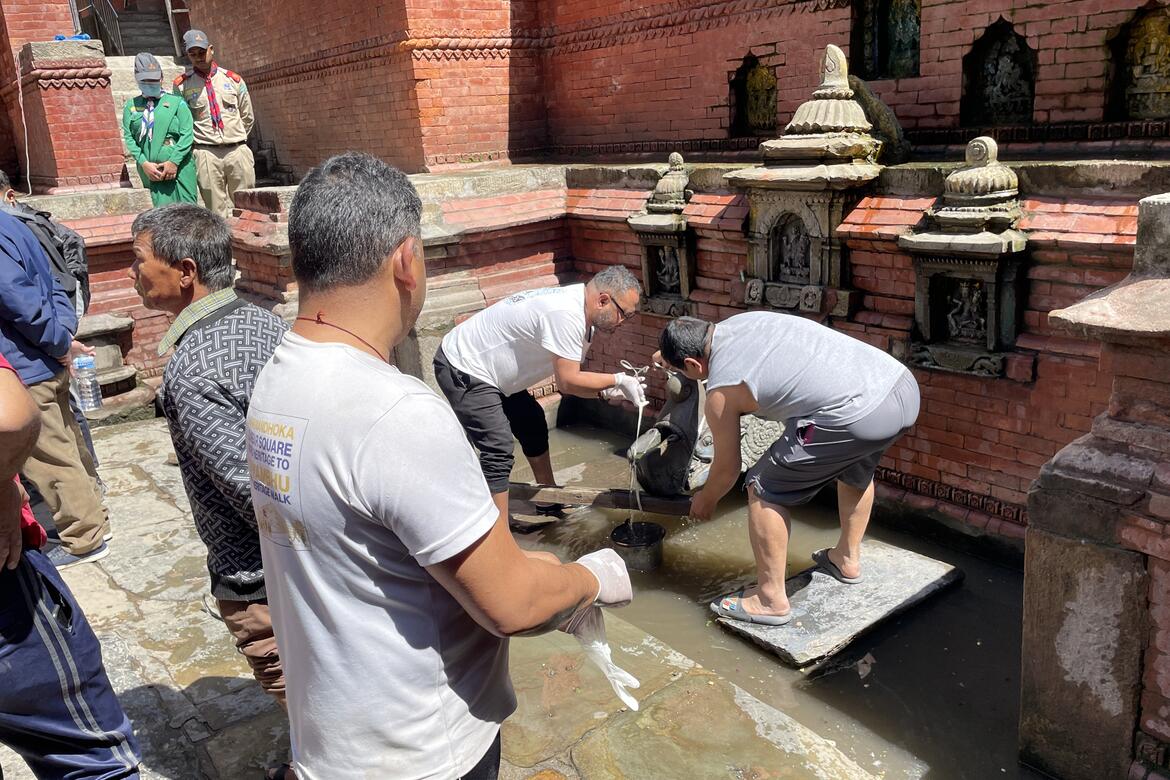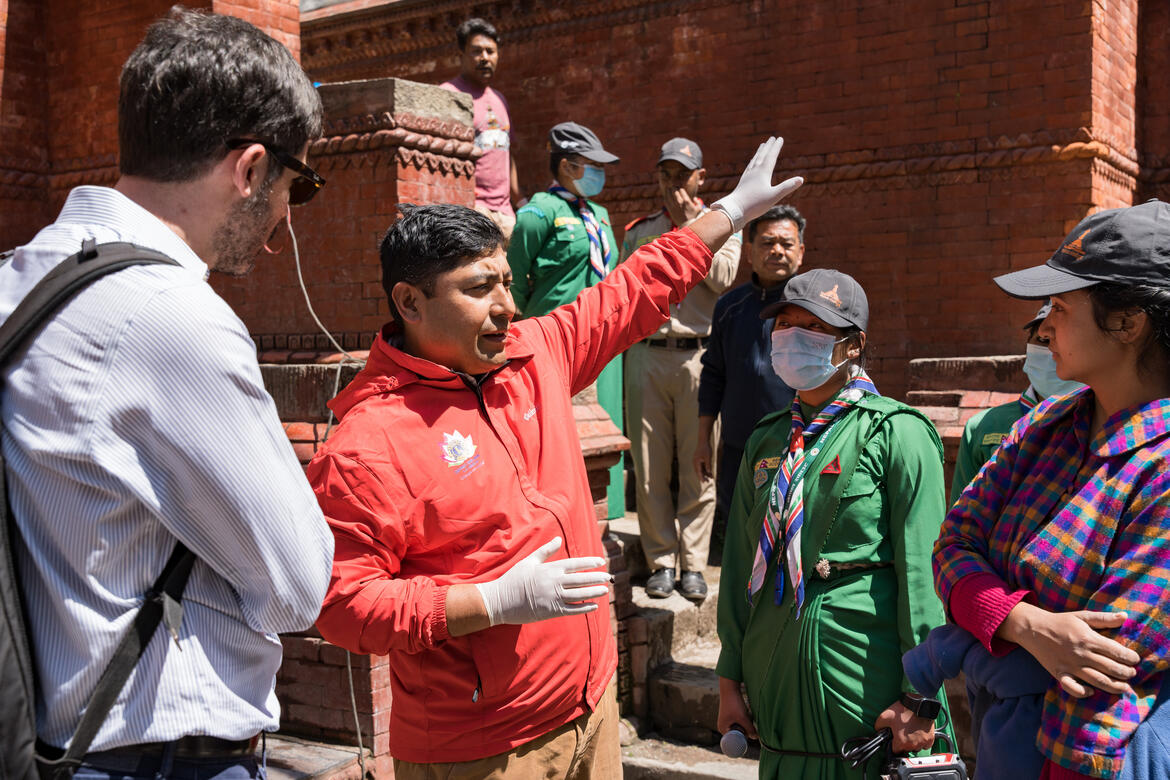Watch Day Celebrations at the Hitis of Kathmandu Valley in Nepal Highlight Water Security
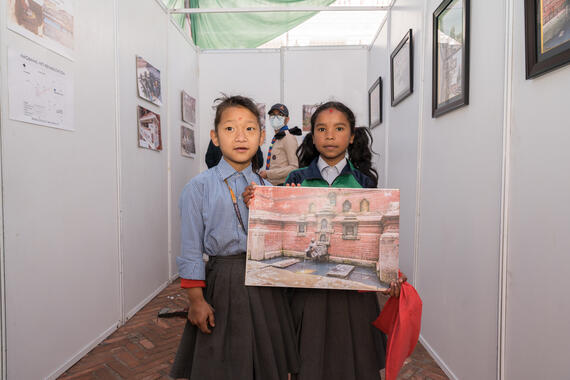
In honor of World Water Day, observed every year by the United Nations to raise awareness of the importance of universal access to clean water, World Monuments Fund (WMF) and its local partner Chiva Chaitya Organization (CCO) held Watch Day festivities for the Hitis (Water Fountains) of the Kathmandu Valley, Nepal. Events included a photo exhibition in Kathmandu’s Durbar Square, a UNESCO World Heritage site, as well as tours of the hitis in the surrounding area.
Selected for the World Monuments Watch in 2022, the hitis of the Kathmandu Valley are a system of traditional public fountains—some dating as far back as the sixth century CE—that often take the form of ornate carvings of Buddhist and Hindu deities. They continue to serve as a crucial form of water infrastructure for a significant proportion of the population: an estimated 20% of Kathmandu Valley residents do not have water piped into their homes, and those hiti spouts that remain functional are the primary source of drinking for low-income households. Disruptions to monsoon rains due to climate change have stressed the region’s water supply, leading to frequent service shutoffs by utility companies. As such, these local fountains are an even more important lifeline.
Water security was a major theme of the Watch Day, one highlighted by Alina Tamrakar, a conservation architect at the NGO Baakhan Nyane waa (Story Come to Listen), as she led participants on a guided tour covering ten hitis—some still in use, others no longer functional—in the area. Her tour highlighted both the opportunities hitis provide and the threats they face today, as well as their historical, social, and religious significance. The Maruhiti Club, a community-based organization that cleans hitis and practices religious rituals such as grain and flowers offerings at the sites, also spoke about their efforts to maintain these public fountains.
In addition to Yiannis Avramides, Senior Director of Programs at WMF, and Hunghsi Chao, WMF Program Manager, other attendees included Chiva Chaitya Organization members, concerned citizens, tourists from abroad, local NGOs, and representatives from UNESCO’s office in Nepal. Prasiit Sthapit, a photographer documenting the story of the hitis as part of a fellowship program jointly run by WMF and Magnum Foundation, was also in attendance taking photographs and collecting oral histories.
Watch Days like this one are celebrations by local communities held at WMF Watch sites to honor the preservation of these places. For more information on the 25 sites named to the Watch in 2022, click here.
The World Monuments Watch is a nomination-based process that galvanizes individuals, communities, and leaders from across the public and private sectors to come together around global issues affecting heritage sites and sets the future direction of WMF’s fieldwork.
Since 1996, WMF has contributed over $110 million to projects at more than 300 Watch sites and helped communities leverage an additional $300 million from other sources.
World Monuments Fund’s work at this site is made possible, in part, by the Watch Committee of World Monuments Fund, American Express, and Tianaderrah Foundation / Nellie and Robert Gipson.
Learn More
World Monuments Fund safeguards cultural heritage around the globe, ensuring our treasured places are preserved for present and future generations.
Sign up for our newsletter to receive regular updates on our projects, stories from the field, upcoming events, and more!

